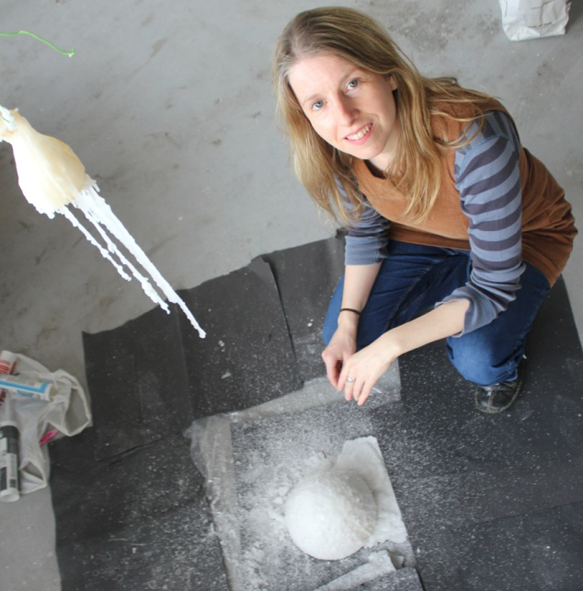As you
may be aware, I have an interest in mindfulness. I both practice mindfulness
and research its effects in the context of chronic stress.
A rather disgruntled piece from a
couple of months back in the Sunday Review of the New York Times has been
getting some ongoing attention on social media. My response to it is a bit
delayed, but if you are interested, here is a link to the original article
(which I quote at some length in italics in this post):
http://www.nytimes.com/2016/11/26/opinion/sunday/actually-lets-not-be-in-the-moment.html
Whippman opens:
I’m making a failed attempt at “mindful dishwashing,” the subject of a how-to article an acquaintance recently shared on Facebook. According to the practice’s thought leaders, in order to maximize our happiness, we should refuse to succumb to domestic autopilot and instead be fully “in” the present moment, engaging completely with every clump of oatmeal and decomposing particle of scrambled egg. Mindfulness is supposed to be a defense against the pressures of modern life, but it’s starting to feel suspiciously like it’s actually adding to them.
I'd probably be
flattering myself if I called myself a "thought leader", but I can
say that mindfulness is intended to be a non-judgemental awareness of the present moment. The
"decomposing particle of scrambled egg" probably ain't aesthetically
pleasing to the author, but I guess mindfulness is more about trying to get
away from the judgment calls we naturally make. Easier said than done, but
mindfulness is a practice, not something one is supposed to get overnight.
The point about
mindfulness adding to our pressures is interesting though; I think a point that
is implicit here is feelings about our own feelings. If one doesn't start to
feel an effect from a practice like mindfulness after a few weeks, there is of
course the risk that we might start to think that we are particularly resistant
to psychological self-improvement. Some people take longer than others to
"get into" mindfulness (and some will naturally give up on the
practice over time). This is something a skilled mindfulness instructor should
be able to pick up with clients. In any case, good mindfulness materials will
be at some pains to reassure novices that they should not beat themselves up if
their minds (naturally) start to wander as they engage in meditation (I know my
own mind still wanders quite a lot mid-meditation after a few years of
practice).
Perhaps the single philosophical consensus of our time is that the key to contentment lies in living fully mentally in the present. The idea that we should be constantly policing our thoughts away from the past, the future, the imagination or the abstract and back to whatever is happening right now has gained traction with spiritual leaders and investment bankers, armchair philosophers and government bureaucrats and human resources departments....
Surely one of
the most magnificent feats of the human brain is its ability to hold past,
present, future and their imagined alternatives in constant parallel, to offset
the tedium of washing dishes with the chance to be simultaneously mentally in
Bangkok, or in Don Draper’s bed....What differentiates humans from animals is
exactly this ability to step mentally outside of whatever is happening to us
right now, and to assign it context and significance. Our happiness does not
come so much from our experiences themselves, but from the stories we tell
ourselves that make them matter.
But still, the advice to be
more mindful often contains a hefty scoop of moralizing smugness, a kind of
“moment-shaming” for the distractible, like a stern teacher scolding us for
failing to concentrate in class....This judgmental tone is part of a long
history of self-help-based cultural thought policing. At its worst, the
positive-thinking movement deftly rebranded actual problems as “problematic
thoughts.”...This is a kind of neo-liberalism of the emotions, in which
happiness is seen not as a response to our circumstances but as a result of our
own individual mental effort, a reward for the deserving. The problem is not
your sky-high rent or meager paycheck, your cheating spouse or unfair boss or
teetering pile of dirty dishes. The problem is you.
It is, of
course, easier and cheaper to blame the individual for thinking the wrong
thoughts than it is to tackle the thorny causes of his unhappiness. So we give inner-city
schoolchildren mindfulness classes rather than engage with education
inequality, and instruct exhausted office workers in mindful breathing rather
than giving them paid vacation or better health care benefits.
Truly nothing
makes me #triggered like the implication of neoliberalism being thrown at
psychology. Never mind that I help to run free mindfulness classes for
caregivers. (Okay, okay, I'm taking a broader social point too
personally). Of course, if individual therapeutic approaches are treated
as if they are going to solve all of society's ills then these ills will
remain. We should be vigilant to the very real threat of psychological
therapies being seen as a cure-all in this way. But I'm also reminded of Christopher
Hitchens's sarcastic remark along the lines of "Oh well, we can't do
everything, so let's do nothing". Even in fairer societies people will
face challenges, and if a way thinking can help them to build resilience then
this is a good thing.
I'm concerned
there's an implication here that people think mindfulness will turn people into
doormats. Being mindful doesn't mean that you can't recognise that you are
being wronged, nor does it mean that you can't act to right this wrong or
protect yourself or your community.
In reality, despite many grand
claims, the scientific evidence in favor of the Moment’s being the key to
contentment is surprisingly weak. When the United States Agency for Healthcare
Research and Quality conducted an enormous meta-analysis of over 18,000
separate studies on meditation and mindfulness techniques, the results were
underwhelming at best.
Although some of the studies
did show that mindfulness meditation or other similar exercises might bring
some small benefits to people in comparison with doing nothing, when they are
compared with pretty much any general relaxation technique at all, including
exercise, muscle relaxation, “listening to spiritual audiotapes” or indeed any
control condition that gives equal time and attention to the person, they
perform no better, and in many cases, worse.
The meta-analysis Whippman discusses should certainly give pause to anyone who thinks that mindfulness is everyone's "key to contentment". However, the 18,000 studies she mentions are simply the titles that were screened in the systematic review-the conclusions of the article are actually based on evidence from 47 studies. This is still a lot of evidence, but although many studies focused on people with anxiety problems, the evidence came from people with really quite diverse clinical problems (the analysis did not include studies looking at mindfulness in healthy populations). It should also be noted that it is generally quite difficult to show effects that are greater than an active control. In particular, exercise has a strong antidepressant effect, so to suggest for example that mindfulness is "no better than" exercise is weak criticism. Nonetheless, it should be borne in mind that the observed beneficial effects of mindfulness on anxiety and depression were mild-moderate.
I think
another point being lost in this quick overview is the strong individual
variability in response to mindfulness. As with many other therapeutic
approaches, a lot of people benefit but a few will experience negative effects;
it should be noted that mindfulness comes with risks (it may be that people prone to panic
attacks in particular should exercise caution). More common than an actively
unpleasant reaction is the feeling that "mindfulness simply isn't of
interest for me". This decision that it "doesn't float my
boat" may happen after a few sessions (I suspect Whippman falls within
this group) or oftentimes the minute someone hears a brief description of
what mindfulness is. And if mindfulness doesn't make someone tick, and
other activities do, then good for them.
But perhaps the
conclusion I'm most concerned that people will draw from this article is not
that mindfulness will have no major effect overall in randomised controlled
trials compared to a strong active control (which could happen due to strong
individual differences in response), but rather that mindfulness does nothing
at all-that it is a kind of homeopathy of the mind, when it fact it can have
quite profound effects on the way people think, often for good, but sometimes
in more ambivalent or even negative ways as well.
In any case,
if the dishes are a pain in the neck, feel free to mentally travel wherever
your imagination may take you. And if that is where your mind is at present,
try to experience the fun as fully as you can!
Mindfulness and the mind
The breadth and depth of research impact


